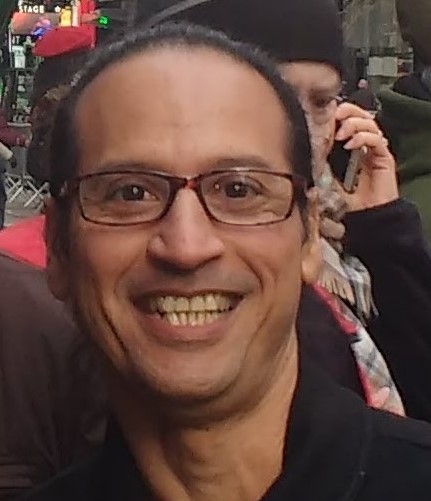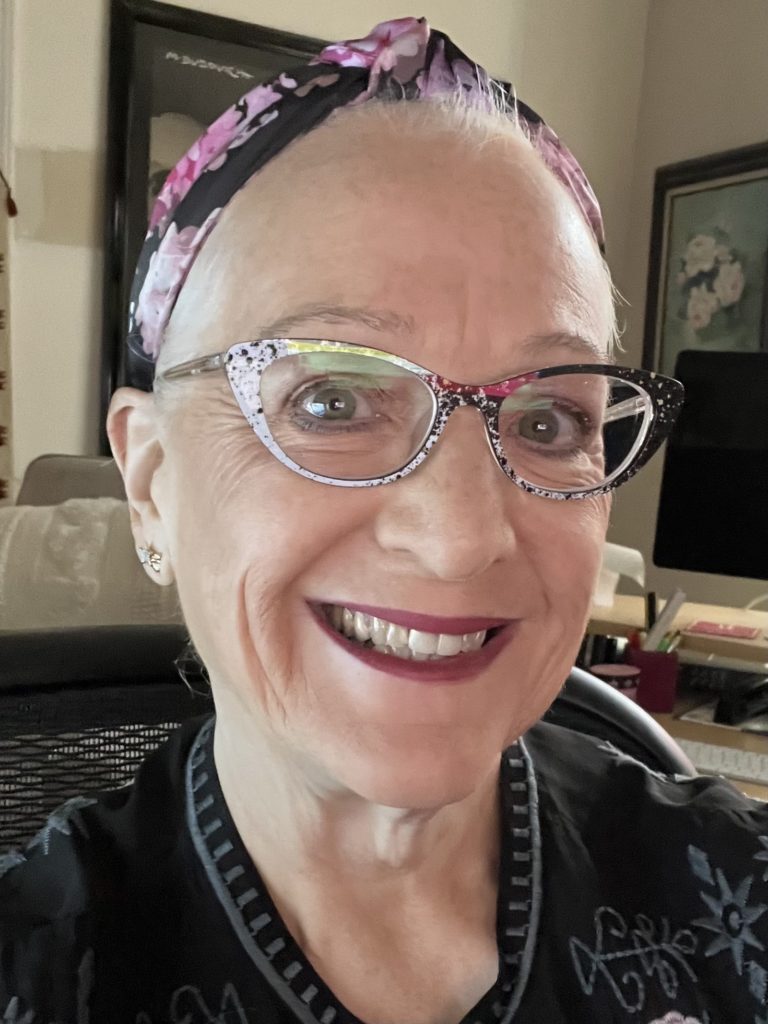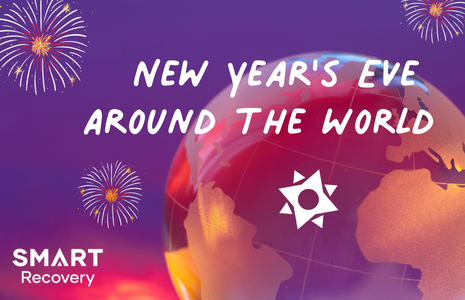…historically the mental health field has had a very well-defined definition of partial recovery but literally no definition, until very recently, a full recovery from severe mental illness. We now have long-term studies of the course and trajectory of schizophrenia and bipolar disorder, for example, that are really challenging that, and really beginning to signal the emergence of the concept of full recovery from some of the most severe complex psychiatric disorders.
On the addiction side, in contrast, we’ve had a very well-defined—a reified, if you will—concept of full recovery and no concept of partial recovery. In fact, it’s almost heresy to even begin to talk about a legitimized concept of partial recovery within the addictions field.
There’s a third concept within this framework that Ernie Kurtz and I ran into. We began to find scientific evidence in lots of anecdotal reports from therapists about people who got better than well. What I mean by better than well is that these are not people that we simply extracted the pathology out of their lives, but these are people who, not only went on to recover, but they went on to live incredibly rich lives, in terms of the quality of their life and service to their communities, and these are people who would later begin to talk about addiction and recovery was for them a blessing.
Experiencing Recovery, 2012 Norman E. Zinberg Memorial Lecture, William L. White
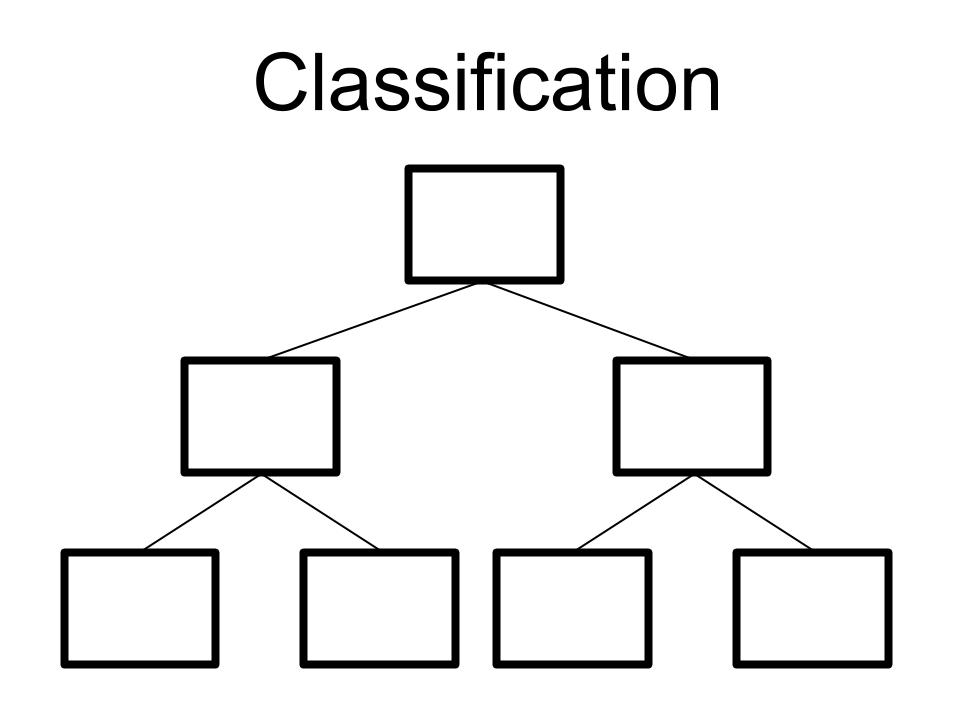
As Bill points out, there was a time when full recovery from addiction eclipsed partial recovery and was used to delegitimize partial recovery.
During this time, mental health advocates felt limited and trapped within a system that felt no obligation to facilitate (or even hope for) full recovery. They clamored for a system of care that would offer pathways to full recovery.
There’s considerable energy around models of partial recovery from addiction, but there is resistance to distinguishing between types of recovery, which results in tension between full and partial models. It also makes it difficult to discuss the quality of life implications for these types and explore the varieties of endpoints patients may seek and treatment/recovery models may be associated with.
I think the fear is that distinguishing between types represents a return to the delegitimization of partial recoveries. That is a risk. But, failure to distinguish comes at the expense of the opportunity for people to make informed choices about their recovery pathway and its implications for what they want in the other spheres of their lives. It also precludes exploration of pathways to that “better than well” (or, transcendent) type of recovery.
For more:
 Early recovery is often described as an emotional rollercoaster ride. Elation and relief can quickly turn into anger or shame as feelings come flooding back after being masked by substances for so long. Starting a recovery journal is a helpful way to make sense of these conflicting emotions. As the pen hits the paper, there exists a space for vulnerability and honesty to live and thrive.
Early recovery is often described as an emotional rollercoaster ride. Elation and relief can quickly turn into anger or shame as feelings come flooding back after being masked by substances for so long. Starting a recovery journal is a helpful way to make sense of these conflicting emotions. As the pen hits the paper, there exists a space for vulnerability and honesty to live and thrive.
The goal of a recovery journal is not to dwell on the past or look to the future, but instead to explore feelings in the present. Putting our thoughts down on paper helps us better understand our actions and reactions in a way that is seldom revealed to by simply talking or thinking. Writing gives us the answer to questions we never even knew we had.
A recovery journal can be as simple or as creative as you’d like! Some prefer keeping an electronic copy on their phone or computer, while others choose notebooks or specialty journals — regardless of the medium, consistency is key. Your recovery journal becomes a way to track your moods, growth and the challenges of daily living. It helps you see where barriers exist and how you have used recovery tools to deal with them. Here are a few ideas to include in your journal:
- What am I grateful for today?
- What can I celebrate?
- How would I rate my day today on a scale of 1-10? Why?
- What am I feeling, specifically?
- What did I do well today?
- What can I improve on?
- What did I do for my recovery today?
- What did I do for others today?
As the pen glides or the keys click, the words and sentences come together as a crucial reminder of what it was like, what happened and what it is like now. The options for your journal are endless, but keep in mind that this is not the place for formality! Find a comfortable place to settle in, turn your “editor” off and get writing! Let your words speak your truth and your truth keep you sober.
***
For more information, resources, and encouragement, “like” the Fellowship Hall Facebook page and follow us on Instagram at @FellowshipHallNC.
About Fellowship Hall
For 50 years, Fellowship Hall has been saving lives. We are a 99-bed, private, not-for-profit alcohol and drug treatment center located on 120 tranquil acres in Greensboro, N.C. We provide treatment and evidence-based programs built upon the Twelve-Step model of recovery. We have been accredited by The Joint Commission since 1974 as a specialty hospital and are a member of the National Association of Addiction Treatment Providers. We are committed to providing exceptional, compassionate care to every individual we serve.
The post Why You Should Be Keeping a Recovery Journal appeared first on Fellowship Hall.

A friend recently shared a research summary reporting that cannabis users are at higher risk of clots and limb amputation following a common surgery.
Researchers at Michigan Medicine analyzed more than 11,000 cases from the Blue Cross Blue Shield of Michigan Cardiovascular Consortium, known as BMC2, to review patient cannabis use and postoperative outcomes for lower extremity bypass after 30 days and one year. The minimally invasive procedure, also called a peripheral artery bypass, involves detouring blood around a narrowed or blocked artery in one of the legs with a vein or synthetic tube.
Results published in Annals of Vascular Surgery reveal that patients who used cannabis prior to lower extremity bypass had decreased patency, meaning the graft had a higher chance of becoming blocked or occluded, and were 1.25 times more likely to require amputation one year after surgery. Cannabis users were also 1.56 times more likely to use opioids after discharge.
Cannabis users had worse bypass outcomes, increased amputation and opioid use. (2022). University of Michigan.
Over the years, I’ve been involved in caring for many patients who received or needed a heart valve replacement due to endocarditis. Denial of life-saving surgery was shockingly common on the basis of the patient’s addiction. (It’s worth noting that these surgeries are done with pig valves, so scarcity is not a concern.) More recently, I’ve been peripherally involved in some cases where a patient required a transplant and substance use was an exclusionary criteria.
These are often terrible situations for everyone involved–the patient in need of multiple kinds of care (often urgently), the medical team faced with a decision to deny life-saving care, and families feeling powerless on multiple levels.
I assumed stigma was a driver of these barriers to life-saving care, but this suggests there may be legitimate reasons to be concerned about the impact of cannabis use on surgical outcomes.
If that’s true, two important questions come to mind:
- First, I’m sure there are other conditions and behaviors that are associated with bad outcomes. Is there parity between the response to this risk factor and other risk factors?
- Second, how do we put these patients on a pathway to becoming a good candidate for surgery with a good long-term prognosis?
The good news is that most people who use cannabis (and other substances) have mild to moderate use disorders, if they have a disorder at all. For those with severe and chronic problems, we have a great model that could be adapted to the needs of these patients. Unfortunately, this model is only used for health professionals, pilots, and sometimes lawyers. These models deliver outstanding substance use outcomes and are associated with improvements in quality of life.
Those models are built around occupational licenses and maintaining public safety and are intrusive, but can provide a framework for stabilizing patients, recovery management, and monitoring. It’s easy to imagine using higher intensity specialty care up front, ongoing recovery support services (peers and/or mutual aid, for example), and integrating recovery check-ups into the rest of their primary and specialty care.
We have models, and we know people recover every day to become “better than well.” Do we have the will?

A few days ago Jason Schwartz published a very interesting piece on Recovery Review titled “Food addictive?” It’s a brief and interesting read. In his post he embedded the 30 minute interview that inspired him to write that piece. The interview is well worth a listen.
In short, Jason found the argument that food can be an addiction quite compelling. At the end of his post he said he would be interested in any counterarguments. That is to say, he indicated he would be interested in reasoning against the author’s assertions that were in favor of the existence of “food addiction”.
I decided to do some thinking as Jason requested, and share a little more.
Below are some things to consider against the notion of “food addiction“.
- Overall, eating among humans is A) an obligated behavior with B) a central mechanism.
- That is to say, we cannot not eat.
- And the physiological mechanisms of eating are literally hard-wired within us for the very behavior of eating.
Substance addiction is not like that per se. For example, survival of our species does not rely on smoking crack, nor are we physically built as a species literally for the central purpose of smoking crack.
Thus, the disorder the author describes is a kind of eating disorder, not addiction per se. The author describes a literally different kind of disorder, albeit with some features similar to addiction.
2. By extension of #1 above, hunger for food is literally not “craving” per se. Hunger for food and craving for substances are different phenomena. And “satiety” is an umbrella term with categorically different sub-sets, such as:
- eating-related satisfaction that is a normal physiological operation upon eating to sufficiency; and
- removal of the aversive urge or desire to use a substance that, when accomplished, does not satisfy a pre-existing and intrinsically hard-wired survival mechanism per se.
The author argues that craving and satiety are the same in “food addiction” and “substance addiction”.
But the cycles of craving and satiety in food addiction would necessarily include both:
- the in-born survival-based phenomena of hunger and satisfaction everyone experiences every day, and
- the mechanisms and experiences of chemical addiction if the author is correct.
Experientially those are different by definition. And chemical addiction does not operate in that way, involving both. Thus, the author describes a kind of eating disorder per se, not addiction per se.
3. Beverages that contain alcohol are in fact beverages. One experiences an addiction in the conventional way of understanding “chemical addiction” when addicted to alcohol. This illuminates a difference between chemical addiction and the author’s claim of food addiction as being the same as a chemical addiction.
- Fats, sugars, and so forth, as the author claims, are the chemicals or molecules within foods that hold the addiction potential.
- By contrast, our species does not live or die based on drinking a beer or not drinking a beer.
If the author’s claims are correct, the author should show that addiction to beer is a food addiction and also show us an instance of addiction to fat or sugar per se – rather than argue about one having an addiction to the vague category of “food”.
As Gerardo (Gee) Matamoros understands it today, his descent into substance use disorder (SUD) was the result of not knowing how to believe in himself. Gee says this resulted in his developing an identity based on what others thought he should do and be, instead of trying to figure it out on his own. “The identity I had was placed upon me…most of my life I did what I was told to do.”
This extended into his professional life in the high-stress advertising industry as well. Gee says abusing substances was common, even encouraged, and that he bought into the unhealthy aspects of his environment and made bad choices. Years of repeating negative behaviors eventually led to his crisis admission to a psychiatric hospital. From there Gee went to rehab, and that’s where he discovered SMART, “The wonderful thing about the place I went is they allowed you to explore different pathways [to recovery], and one of the options was SMART.” This turned Gee’s life in an entirely different direction.
Once Gee learned about SMART’s principles and tools, he was able to address his feelings of confusion, anxiety, and fear. He began to see more clearly that he had within himself the power to change his behavior. “SMART really resonated for me in the way the information is presented and the way you work your own journey and empower yourself.” Gee started setting goals based upon his own values, and making decisions for himself.
One of the things Gee values the most is SMART itself, because he sees how it benefits so many individuals. For the past several years he has taken action based on that value by working on behalf of SMART in several ways. He is a support meeting facilitator, trains facilitators, and has served as President of SMART Recovery NYC.
Then there are the additional actions he has taken on behalf of the Latinx community, something Gee feels is important for him personally, “[I’m thrilled] to help a community that I belong to, am a part of, whether by running an online meeting in Spanish or helping to adapt different materials.” He says he receives texts, emails, and is told in person by participants, that these specific resources are very valuable to the Latinx community.
On a more personal note, Gee credits SMART with providing tools that have helped him grow into a person who now does things he never thought he would do, e.g., publishing a short story, working as a model, and embracing the role of a social activist. “None of this could have been done without all of the support I get from SMART, my family, and friends.”
As illustrated by Gee’s story, the ripple effect of one person benefiting from SMART and then deciding to help others is huge. Gee took that positive impact from his involvement and turned it into action that helped others in the Latinx community. In doing so, he has made it possible for SMART to reach more individuals who are asking for support.
Your year-end gift will be put to work immediately. SMART will be able to continue to support Gee in his work with others, and help more individuals embrace Life Beyond Addiction.
Additional Resources
PLEASE NOTE BEFORE YOU COMMENT:
SMART Recovery welcomes comments on our blog posts—we enjoy hearing from you! In the interest of maintaining a respectful and safe community atmosphere, we ask that you adhere to the following guidelines when making or responding to others’ comments, regardless of your point of view. Thank you.
- Be kind in tone and intent.
- Be respectful in how you respond to opinions that are different than your own.
- Be brief and limit your comment to a maximum of 500 words.
- Be careful not to mention specific drug names.
- Be succinct in your descriptions, graphic details are not necessary.
- Be focused on the content of the blog post itself.
If you are interested in addiction recovery support, we encourage you to visit the SMART Recovery website.
IMPORTANT NOTE:
If you or someone you love is in great distress and considering self-harm, please call 911 for immediate help, or reach out to 988 Suicide & Crisis Lifeline @ 988, https://988lifeline.org/
We look forward to you joining the conversation!
*SMART Recovery reserves the right to not publish comments we consider outside our guidelines.*
Submit a Comment
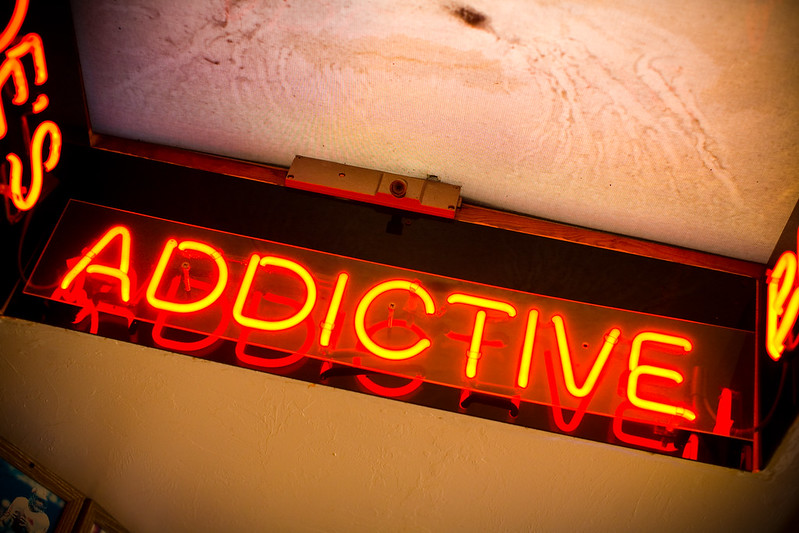
This interview is brilliant.
I’ve long been wary of extending the boundaries of addiction to food and compulsive behaviors. My concern is that diffusion of the conceptual boundaries of addiction would reinforce stigma. We often hear people describe being addicted to shopping, chocolate, exercise, their phones, social media, sex, gambling, etc. Sometimes the invocations of addiction are describing debilitating compulsions. More often, they are describing excesses or even a love for something. I’ve no doubt that addiction and many compulsive behaviors share many of the same mechanisms. However, I also believe it’s important to protect the boundaries of addiction. My concern is that the over-extension of addiction ends up universalizing addiction, which leads to people saying and thinking things like, “I’m addicted to chocolate, but I have some self-control. Why can’t that person manage their drinking? They must not love their family enough.”
However, Dr. Gearhardt makes the most compelling case I’ve ever heard for the idea that some people experience addiction to highly processed foods. The interview is well worth your time.
On “addictiveness” – For most of my career, I’ve tried to add nuance to people’s understanding of addiction. When I lecture, we talk about addiction as a product of the interaction between the substance and factors within individuals, as well as some environmental factors. We talk about “capture rates”, pointing out that even the substances with the highest capture rates are only associated with addiction in a fraction of users.
In recent years, efforts to destigmatize recovery and addiction have veered into destigmatizing drugs. One theme of that effort is that the addictiveness of drugs is often misunderstood and overstated, that the drivers of addiction really exist in the individual and maybe their environment.
The locus of addiction has swung so far toward the individual that the interviewer repeatedly states that he’s not used to thinking about the addictiveness of various substances. Her exploration of what it means to call something “addictive” and how to evaluate that quality of a substance is very thought provoking and challenges me to identify all my priors.
On the role of substance processing – One continuing education moment that has stuck with me for more than 20 years was Bill White’s response to a question about what substances were likely to become a crisis in the future. He responded that he didn’t know which substance would pose a major problem in the future, but that the substance was already here and someone would come up with a new way to prepare and consume it, and this innovation would transform the relationship between the drug and some of its users. He pointed to opium and the syringe, and the emergence of crack cocaine as examples.
Her discussion of the way food processing concentrates the most rewarding elements in the food is very thought-provoking. Almost as an aside, this point is amplified by her reference to tobacco companies moving into the food industry and promoting highly processed food. She even suggests that some of these foods shouldn’t be categorized as food. Rather, they should be treated as highly refined substances engineered for their reward-inducing properties.
Environmental factors – She characterizes “food insecurity” as a misnomer, suggesting that “nutrition insecurity” is a more apt descriptor because it highlights the role of environmental factors regarding which foods people have access and exposure to. Again, this challenges the idea that addiction is primarily a property of the individual. She highlights how exposure dramatically increases addiction and harms by pointing to tobacco as a public health success story.
On addiction – The exploration of addiction, particularly in the absence of euphoria, is really clarifying. She emphasizes the roles of salience and motivation- that addiction is much more about wanting than liking or pleasure. She identifies four criteria for assessing addictiveness drawn from the surgeon general’s report on tobacco. They are associations with compulsive use, mood-altering effects, reinforcing properties, and inducing craving.
I’d love to hear a smart counterargument. I’m not totally sold, and I want to think through all of the implications, but this is easily the most compelling case I’ve heard in my career. The paper is available here.

The video below and the accompanying story grabbed my attention recently. There’s been a lot of talk about crime and disorder in many urban areas since the beginning of the pandemic. I haven’t known what to make of it because much of the discussion is very politicized. However, it’s become clearer that, while people may disagree about the scale of the problem, there are real problems. It’s also clear that substance use, mental illness, and the pandemic’s disruptions of community life all play important roles.
In my experience, it’s become common to hear the needs of people in recovery or people seeking recovery pitted against the needs of people who use drugs. Having dedicated my career to helping people with addiction achieve full, stable recovery, I don’t want to see their needs subordinated to anyone. In many discussions, even in purported recovery discussions, the needs of people in recovery or seeking recovery are often framed as problematic for people who use drugs. (That the needs of the same person’s past, present, and future selves don’t always align is a topic for another post.)
This video grabbed my attention because Matt Dorsey seems to be very seriously considering the needs of people in/seeking recovery, people who use drugs, and the rest of the community. While many give lip service to the needs of all those groups, few communicate the balance and seek the synthesis I hear in these comments.
The San Francisco Gate summarized the San Francisco Recovers agenda as follows:
The “Right to Recovery” program would expand housing resources for those recovering from addiction, and encourage law enforcement to arrest drug dealers and confiscate illegal drugs being used outside of treatment facilities and safe consumption sites.
The “Sober New Deal” would provide more education and career-based resources for those in recovery, including job training, a student loan program and food and health assistance.
San Francisco Recovers also takes on five recommendations from the city’s 2021 Street-Level Drug Dealing Task Force, including implementing supervised consumption sites.
City Officials Introduce “San Francisco Recovers” Strategy To Intervene Street Drug Market. (2022, September 7). SFGATE.
This is important for all sorts of obvious reasons — the overdose crisis, the impact of SUDs on families, the public health burden, the value in the lives of people who use drugs, the assets that people in recovery become, the opportunities that opioid settlements provide, etc. However, I believe one underappreciated reason all of this is important is that the overdose crisis and shifts in public attitudes have opened a window of opportunity that will not remain open forever.
I’ve been concerned about this for a while but a comment in a recent interview caught my attention. They were discussing Trump’s speech to announce his 2024 campaign.
…I’m going to say something that might sound upsetting. But part of the speech they cut away from, which was the part of the speech that I think had the most political dynamite in it — and it’s awful to say this — but it’s when he talked about, basically, executing drug dealers the way China does.
That was not a policy I advocate at all, but it was the sort of thing that actually propelled Trump in 2015 and 2016, which was picking an issue that is under-discussed in American politics — the fentanyl epidemic — and proposing an absolutely radical solution that is far outside of the political imagination of our ruling class.
The idea of instituting Chinese-style justice in the United States, of course, is hateful. But it’s the sort of thing that I think actually worked for him politically, is that I’m going to highlight to you how much I care about an issue that isn’t being talked about by saying the most outrageous thing imaginable about it.
Michael Brendan Dougherty on The Ezra Klein Show
Apparently, this has been a theme in his speeches for a while.
Given a choice between public order and safety or decriminalization and harm reduction, the public is going to choose public order and safety every time. The overdose crisis changed the context for this decision — destroying the notion that the status quo was providing safety and order for families and communities. The willingness to try new approaches shouldn’t be mistaken for a commitment to these approaches.
I don’t think anyone expects addiction and other drug problems to be solved, but I believe that this window of opportunity will close if advocates, providers, and public officials cannot point to visible and unambiguous improvements in quality of life for communities, families, and individuals. I also believe the public needs to see visible pathways to the kind of recovery that restores individual lives, as well as families and communities, and they need to see policies that help put people on those pathways.
In San Francisco, the public isn’t convinced it’s improving conditions. Rather than defend the existing model, Dorsey is looking to protect new harm reduction services by addressing community concerns and supporting recovery.
When Loretta Billingsley found SMART Recovery, she says she wasn’t fully committed to addressing her troublesome alcohol use, but wanted to understand more about it. Perhaps her long career as an editor in the media industry led to her practice of breaking down issues with a keen eye for component parts. In this case, Loretta says she was drawn in initially by the behavioral science part of SMART, and saw how that related to her circumstances. Soon after learning more, Loretta was all in as a participant. Then she chose to dive in even deeper.
Loretta says she realized early on that she wanted to give back to SMART. She decided to take the training to be facilitator and start a meeting, but not of the general variety, “I made the decision to make it a women’s meeting. It was important to me; I saw the need for it.” Further, she saw a women’s meeting as important for SMART itself as part of an organizational evolution to greater inclusiveness.
Loretta is most gratified by watching women grow in their recovery by implementing the practices of SMART, otherwise known as tools. She says she sees women starting to listen to their “inner ally,” rather than their “inner critic.” This is accomplished together as the connection between participants gets stronger, “Not only are you sharing possibly what has made your recovery relevant—you learn from people who are growing in their own recovery.”
The bottom line for Loretta, who is now a SMART Regional Coordinator in Georgia, is that we are all on a recovery journey of learning, growing and healing. She says a women’s meeting offers a very safe space for participants to be vulnerable and support each other. And that makes all her effort more than worth it.
Help Us Reach More Women in Recovery
As demonstrated in Loretta’s story, the multiplying effect of one person deciding to help others is significant. Loretta benefitted from SMART and decided to apply her energy and time to offer SMART’s science-based and self-empowering principles and practices to a community of women. In doing so, she has made it possible for SMART to reach more individuals who are asking for support.
Your year-end gift will be put to work immediately. SMART will be able to help Loretta and the women in her meeting find the peer support they need to overcome addiction, and embrace Life Beyond Addiction.
Additional Resources
PLEASE NOTE BEFORE YOU COMMENT:
SMART Recovery welcomes comments on our blog posts—we enjoy hearing from you! In the interest of maintaining a respectful and safe community atmosphere, we ask that you adhere to the following guidelines when making or responding to others’ comments, regardless of your point of view. Thank you.
- Be kind in tone and intent.
- Be respectful in how you respond to opinions that are different than your own.
- Be brief and limit your comment to a maximum of 500 words.
- Be careful not to mention specific drug names.
- Be succinct in your descriptions, graphic details are not necessary.
- Be focused on the content of the blog post itself.
If you are interested in addiction recovery support, we encourage you to visit the SMART Recovery website.
IMPORTANT NOTE:
If you or someone you love is in great distress and considering self-harm, please call 911 for immediate help, or reach out to 988 Suicide & Crisis Lifeline @ 988, https://988lifeline.org/
We look forward to you joining the conversation!
*SMART Recovery reserves the right to not publish comments we consider outside our guidelines.*
 The countdown to the holidays is on! For many, holidays mean delightful aromas, twinkling lights and celebrations with friends and family. For some, along with the anticipation of sharing joyous times together comes the realization that the holidays can be challenging when you’re in recovery. But, there is good news! It doesn’t have to be a struggle if you make a plan for your holiday self-care. Planning holiday self-care promotes your responsibility for recovery. It requires you to spend time and energy focusing on you and becoming comfortable with being clean and sober. The best part is you don’t have to do it alone. Here are five tips to help you develop an effective self-care plan for the upcoming holiday season:
The countdown to the holidays is on! For many, holidays mean delightful aromas, twinkling lights and celebrations with friends and family. For some, along with the anticipation of sharing joyous times together comes the realization that the holidays can be challenging when you’re in recovery. But, there is good news! It doesn’t have to be a struggle if you make a plan for your holiday self-care. Planning holiday self-care promotes your responsibility for recovery. It requires you to spend time and energy focusing on you and becoming comfortable with being clean and sober. The best part is you don’t have to do it alone. Here are five tips to help you develop an effective self-care plan for the upcoming holiday season:
- Make time to attend extra meetings.
Look for opportunities to attend extra AA or NA meetings in conjunction with your normal meeting days. Keep in mind that the more meetings you attend during the holidays, the more likely you are to remain clean and sober, preventing a relapse. A special tip: attend a meeting on the holiday before beginning the festivities.
- Stay in contact with your support network.
Connecting with those who support your recovery is crucial. After all, that’s what they’re there for, to help you through the tough times when you need them the most. So, don’t try to do it alone. Reach out to your therapist, recovery friends and family, and to your sponsor.
- Come early, leave early.
Arriving a bit early to the party and leaving early will enable you to have the best of both worlds. You can stay long enough to enjoy time with your friends and family but, leave early to avoid any behaviors that may trigger your desire to use. Special tip: take a friend who is also in recovery with you and serve as one another’s accountability partners.
- As much as possible, maintain a normal schedule.
During the holidays there may be some deviation from your daily routine but, as much as possible, try to maintain your regular schedule. This means continuing your work schedule, getting plenty of rest and finding time to do productive things that you enjoy. Your holiday self-care plan should create a balance between activities and rest. This will help you to avoid triggering dangerous emotions like stress or boredom.
- Opt out when you need to.
Understand that it is OK to say no to an invitation. Do an evaluation of who is attending and what type of activities are planned. Then, determine if going will threaten your recovery in any way. If so, don’t feel bad. Just politely thank the host and decline the invitation. People who are in your corner for recovery will understand.
Investing time to prepare for self–care allows you to think of the holiday season in a different way and marks the start of a new tradition in your life of recovery.
***
For more information, resources, and encouragement, “like” the Fellowship Hall Facebook page and follow us on Instagram at @FellowshipHallNC.
About Fellowship Hall
For 50 years, Fellowship Hall has been saving lives. We are a 99-bed, private, not-for-profit alcohol and drug treatment center located on 120 tranquil acres in Greensboro, N.C. We provide treatment and evidence-based programs built upon the Twelve-Step model of recovery. We have been accredited by The Joint Commission since 1974 as a specialty hospital and are a member of the National Association of Addiction Treatment Providers. We are committed to providing exceptional, compassionate care to every individual we serve.
The post 5 Tips for Effective Holiday Self-care appeared first on Fellowship Hall.
As the holiday season fast approaches, SMART Recovery is busy planning for New Year’s Eve Around the World (NYE-ATW). This special event is a celebration of community by observing together the arriving new year in each time zone.
This annual volunteer driven event, has been an important part of many individuals New Year’s Eve plans since 2007. While previously limited to SROL participants and volunteers, this years celebration is open to the entire SMART Recovery community! Our goal is to offer a lighthearted, entertaining, and supportive space for the entire SMART Recovery community across the globe.
Our NYE-ATW event creates fun ways for people to talk about recovery, period. It’s a unique way to give and receive support from others in recovery, meet new people, and participate in a festive recovery atmosphere. We love being able to offer an alternative way to celebrate New Year’s Eve, which we know can be a challenging holiday.
This event starts December 31st at 5:30 a.m. ET and ends on January 1st at 3:30 a.m. ET with volunteers hosting hourly timeslots. This can be a challenging holiday, so we love being able offer an alternative way to celebrate entering the New Year in recovery!
Special Guest Hosts
- Dr. Joe Gerstein
- Hammer hosting Jeopordy!
- SuzieSMARTFriends hosting Family Feud
- And many more!
What People are Saying About Last Year’s Event
“Felt so supported by the level of commitment it takes to provide the event – thank you!”
“Interesting lineup and topics!”
“[I liked] the format, and fact that so many people were attending multiple meetings, so it felt like a real community over the course of the day and night.
“[I liked] joining others from different countries and cheering each other on.”
How to Participate
No registration is required this year, and meeting information will be coming soon. Please note: no meeting verifications are provided for this special event.
RSVP on Facebook
Help us spread the news of our free, virtual event with your connections. RSVP to this event on Facebook and share it with friends and family.
How to Volunteer
Volunteers are welcome to sign up with a co-facilitator or meeting helper. There is the opportunity to host an hour on our specialized calendar including: Military Veterans & First Responders, LGBTQ+, BIPOC, Women’s/Men’s, Spanish and more! If you volunteer for a specific audience, we encourage you to consider facilitating an hour for our communities in need of additional support this holiday season.
Are you a trained volunteer? To host an hour for NYE-ATW, see VolunteerHQ for the contact information.
You don’t want to miss out on this fun day of community, celebration, and cheer. We look forward to seeing you and ringing in the new year together!
PLEASE NOTE BEFORE YOU COMMENT:
SMART Recovery welcomes comments on our blog posts—we enjoy hearing from you! In the interest of maintaining a respectful and safe community atmosphere, we ask that you adhere to the following guidelines when making or responding to others’ comments, regardless of your point of view. Thank you.
- Be kind in tone and intent.
- Be respectful in how you respond to opinions that are different than your own.
- Be brief and limit your comment to a maximum of 500 words.
- Be careful not to mention specific drug names.
- Be succinct in your descriptions, graphic details are not necessary.
- Be focused on the content of the blog post itself.
If you are interested in addiction recovery support, we encourage you to visit the SMART Recovery website.
IMPORTANT NOTE:
If you or someone you love is in great distress and considering self-harm, please call 911 for immediate help, or reach out to 988 Suicide & Crisis Lifeline @ 988, https://988lifeline.org/
We look forward to you joining the conversation!
*SMART Recovery reserves the right to not publish comments we consider outside our guidelines.*

